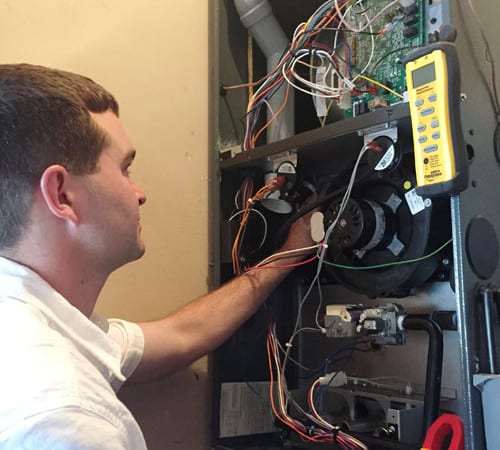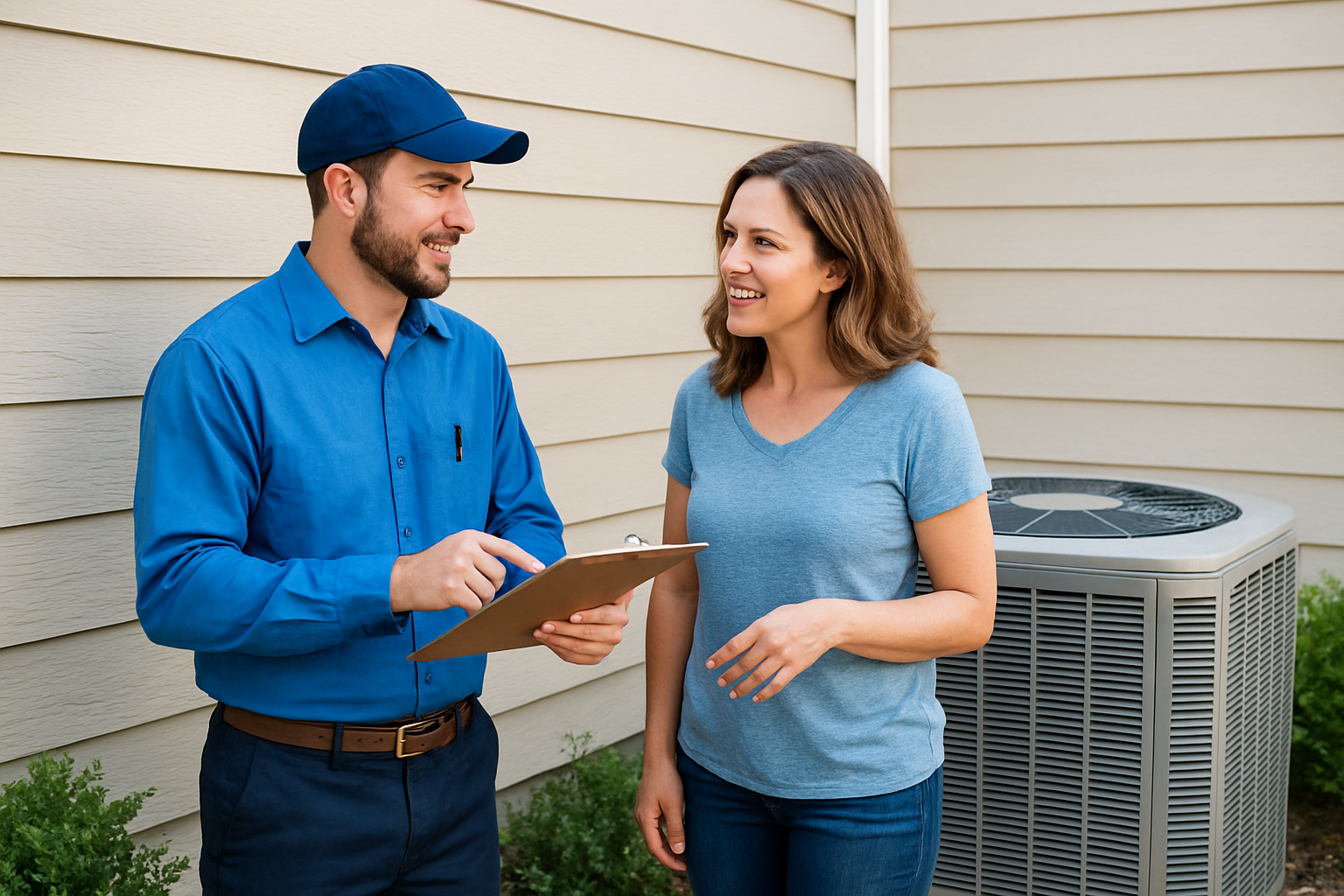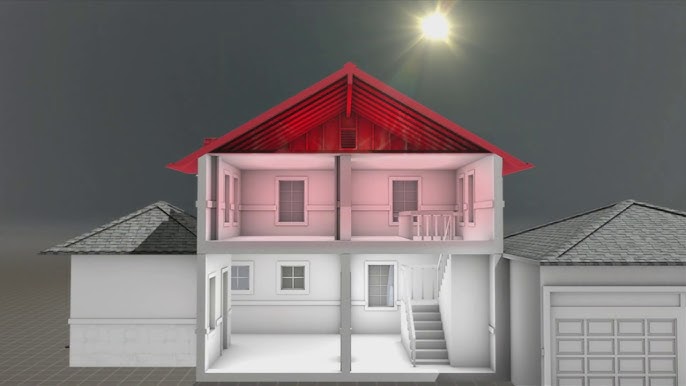
When a heater or furnace fails to turn on, the issue typically stems from a breakdown in one of three critical areas: power supply, control, or ignition. A complete lack of power is a common, often simple culprit, resulting from a tripped circuit breaker or a blown fuse at the main electrical panel, or sometimes a safety switch near the furnace is accidentally turned off.
The control system is another frequent source of failure, usually involving the thermostat, which might have dead batteries, be set to the wrong mode (like "Cool"), or have a wiring fault preventing it from sending the correct low-voltage signal to the furnace's control board. Finally, if power and control are fine, the fault lies with the ignition system; this is the component that lights the gas.
Whether the unit uses an older standing pilot light that has been blown out or a modern electronic igniter that has failed, the furnace's safety controls will prevent the gas valve from opening, ensuring no unburned fuel is released, and keeping the system completely inactive.

If your heater is running but only blowing cold or cool air, it signifies a failure in the critical ignition and burning process. The most common reason for this issue is a problem preventing the gas burners from fully igniting or staying lit, such as a faulty gas valve that isn't opening properly, or clogged burners that are restricting the flame.
Our professional service immediately investigates these ignition failures by checking the continuity and function of the gas valve and performing precision cleaning and adjustment of the burner assembly to ensure optimal fuel flow and complete combustion.
For systems like heat pumps, this failure can be caused by a refrigerant leak or an issue with the reversing valve, which we quickly diagnose using specialized equipment to restore your system's ability to produce heat efficiently and consistently.

When a furnace begins to short-cycle—turning on and off rapidly without completing a full heating cycle—it is often a sign of a complex, intermittent fault within the control or ignition systems.
One primary cause is a dirty or failing flame sensor, which is designed to detect the presence of the flame; if the sensor is coated in soot or is malfunctioning, it incorrectly signals the control board that the flame has gone out, triggering an immediate shutdown for safety. Similarly, other ignition failures or problems with the gas valve can interrupt the burning process prematurely.
However, in other cases, the issue may be a fault in the system's wiring, such as improper or loose wiring leading to the thermostat or control board, causing the heater to lose the necessary command signal. Our diagnostic service thoroughly checks the integrity of the entire electrical and gas system to pinpoint and correct the precise component failure that is causing your unit to cycle inefficiently.

When the pilot light or electronic ignition control fails to stay lit—a frustrating and common occurrence—it almost always signals a safety mechanism kicking in due to a fault in the control or ignition circuit. The issue could stem from a malfunctioning control board itself, which acts as the furnace's central processor; if the board is failing, it may incorrectly interpret signals or simply fail to provide the sustained electrical current needed to keep the igniter hot or hold the gas valve open.
Furthermore, faulty or loose wiring leading to the gas valve, flame sensor, or control board can cause intermittent loss of signal, prematurely cutting off the gas supply and extinguishing the flame. Crucially, any sustained failing in the ignition or burning process—such as low gas pressure or a dirty burner—will cause the flame sensor to register that no heat is being generated, forcing the safety lockout feature to engage, which prevents gas from accumulating and immediately shuts down the entire system.
Don't wait—call us now for a professional diagnostic and possible same-day repair service!

A grinding, screeching, or squealing sound coming from your heater or furnace is a serious symptom that nearly always indicates failing mechanical components requiring immediate professional attention. These high-pitched, metallic noises most frequently originate in the blower motor assembly, which is responsible for pushing heated air through your ductwork.
Specifically, the noise is often caused by worn-out ball bearings within the blower motor that have lost their lubrication and are grinding against metal surfaces, or a failing motor belt that is loose or frayed.
Other failing mechanical parts, such as the inducer motor or the internal fan blades, can also wobble or scrape against their housing due to wear and tear. Continuing to run the system while these sounds are present can lead to the motor seizing completely, resulting in a total system failure and requiring a much more costly repair.
Heater repair requires specialized expertise to ensure your system operates safely and efficiently throughout the Los Angeles heating season. Our technicians are highly skilled in quickly diagnosing failures, whether the issue is complex like a faulty gas valve or simply addressing a lack of maintenance.
We prioritize precision repairs and use advanced diagnostic tools to resolve the root cause of the problem the first time, ensuring your home is restored to comfort with long-lasting results. We service all major brands and types of heating equipment, guaranteeing reliable warmth when you need it most.
Ductless mini-split and heat pump systems require specialized knowledge, as their repairs often involve complex refrigerant circuits and sophisticated electronic controls. We are experts at diagnosing issues unique to these units, such as refrigerant leaks which lead to inadequate heating, or problems with the reversing valve preventing the switch between heating and cooling modes.
Our certified technicians use advanced tools to precisely locate and repair these system critical faults,restoring your unit's energy efficiency and consistent comfort quickly. By choosing our service, you ensure your high-efficiency system is handled by professionals trained in the latest mini-split and heat pump technology.

A: Some common signs to look out for are strange noises and/or smells, system not heating to the desired temperature, and high energy bills. If you are experiencing any of these symptoms it may be time to call LA Construction Heating and Air for a service visit. For more signs and symptoms to look out for click the link below. Warnings signs for your furnace.
There are a few safe and easy ways to troubleshoot your system before contacting your HVAC company. You can check the thermostat settings to make sure they are not on a timer or are on the desired heating setting. You can change the air filters if they are dirty. You can also make sure that your circuit breaker is not turned off. Find more ways to troubleshoot furnace from home.
CO2 leaks are extremely dangerous and are very important to look out for. Some signs that you have a gas leak are higher than normal gas bills, bad sulfur-like odor, or feeling lightheaded and fatigued. If you suspect a gas leak you need to call your gas company right away to confirm and to turn your gas off if necessary. Heat exchanger cracks causes and symptoms.
One easy and affordable way to avoid frequent heater repairs is by having your system regularly maintained. We have various options and affordable pricing for maintenance plans. Tips to avoid expensive furnace repairs in the future.

Choosing a new HVAC system is a significant investment that requires careful consideration of your specific needs, from the size of your space to your budget and energy efficiency goals. The key to a successful project is not only selecting the right system type and features but also hiring a qualified, professional contractor in Los Angeles for proper and safe installation.

Boost comfort in your Los Angeles home with attic fan installation. Discover how attic ventilation improves AC efficiency, protects your home, and keeps it cooler.

Learn how BWP heat pump rebates can lower your AC replacement costs. Maximize heat pump savings—contact LA Construction, Heating and Air for a free estimate.

Need air conditioning service in Los Angeles? LA Construction, Heating and Air provides expert AC maintenance, repair, and installation to keep your home or business perfectly cool.

Discover why professional AC installation in Los Angeles is crucial for peak performance & longevity. Avoid costly DIY risks. Trust LA Construction, Heating and Air for expert AC installation service!

Beyond the price tag: Discover true HVAC value. Explore energy savings, lifespan, warranty, and maintenance costs after professional HVAC installation for long-term home comfort.